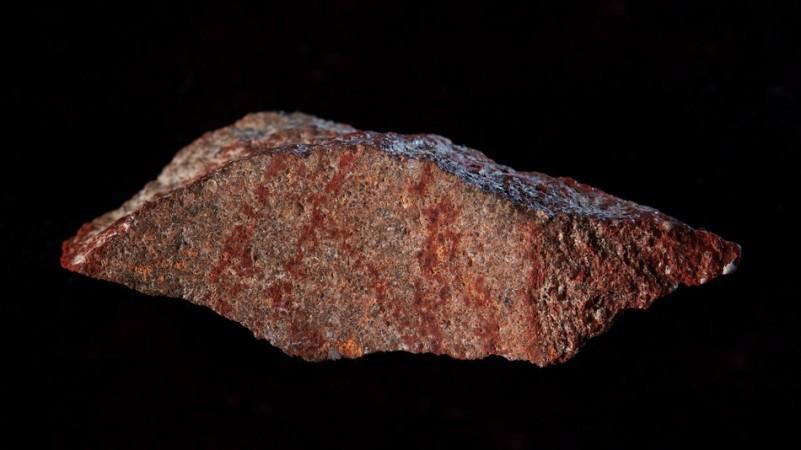
Researchers have found what they claim to be the oldest known human drawing in South Africa.
The impression which looks much like a hashtag was drawn with an ochre pastel on silcrete rock and was found in Blombos Cave, which is situated 300 kilometers (186 miles) west of Cape Town.
The newly discovered drawing is assessed to be around 73,000 years of age, originating much before the first ever known drawings - abstract and figurative - by people from Africa, Europe, and Southeast Asia that were discovered somewhere around 30,000 years.
The results of the discovery were published in the journal Nature by researchers from Europe and South Africa, namely Francesco d'Errico, Karen L. van Niekerk, Laure Dayet, Alain Queffelec, and Luca Pollarolo.
Christopher Henshilwood, a professor from Norway's University of Bergen who drove the research group, disclosed to The Conversation that his group are "hesitant to call it 'art.'"
"It is definitely an abstract design; it almost certainly had some meaning to the maker and probably formed a part of the common symbolic system understood by other people in this group. It's also evidence of early humans' ability to store information outside of the human brain," he added.
Henshilwood included that the cross-patterned designs have been found on bits of ochre in different places, demonstrating our forefathers' capacities to imitate the same design at different locations, on different surfaces as well.
"The discovery adds to our existing understanding of Homo sapiens in Africa. They were behaviourally modern: they behaved essentially like us. They were able to produce and use symbolic material culture to mediate their behaviour, just like we do now," he added.
"They also had syntactic language — essential for conveying symbolic meaning within and across groups of hunter gatherers who were present in southern Africa at that time."
Used as a place of shelter by gatherers and hunters, Blombos Cave is presently a significant archeological site for researchers looking to understand our initial predecessors.
In 2011, an artwork made of abalone shells dating 100,000 years of age was found in the cave, alongside ochre-painted shell beads which were discovered earlier.

















